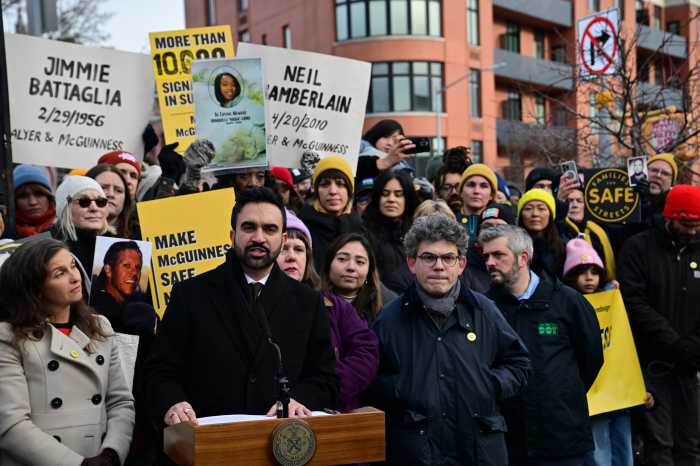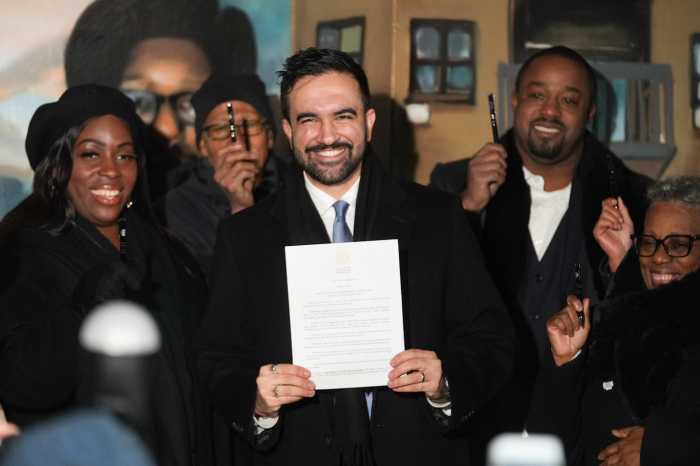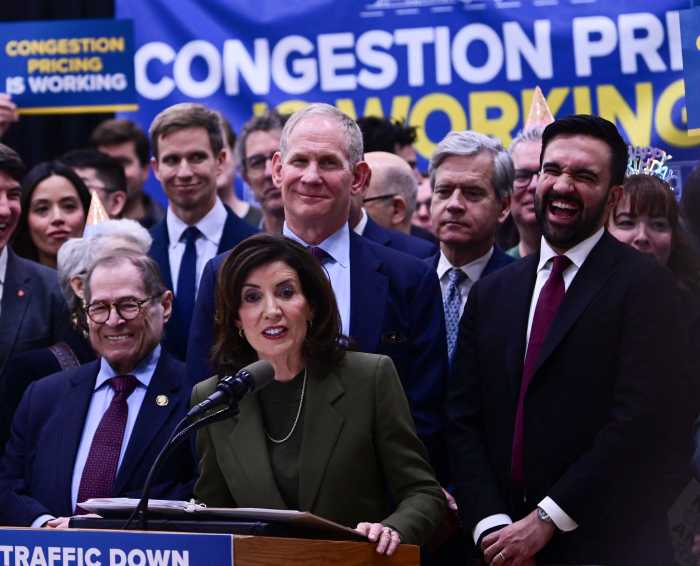BY NATHAN RILEY | With little fanfare, Albany almost passed a medical marijuana bill last year. The progress on moving the measure represents a significant development, but it’s impact on the larger drive for drug reform should not be overstated.
As the New York legislative session drew to a close last June, the final tweaks were made in a bill that satisfied former Governor David Paterson, the barebones Democratic majority in the Senate, and the Assembly.
Democrat Richard Gottfried, who represents Manhattan’s West Side and chairs the Assembly Health Committee, had maneuvered the bill to the point where it almost passed. The chair of the Senate Health Committee, out gay Chelsea Democrat Tom Duane, made comparable progress. With approval from the Senate’s health and criminal justice committees, the bill had momentum. It was the closest the bill had ever come to passing; but it was just that — close, but no cigar.
The momentum is still there, but the players have changed. Long Island Republican Kemp Hannon is the new Senate Health Committee chair, and Dr. Nirav Shah of the NYU Langone Medical Center and Bellevue Hospital is the new state health commissioner and would be responsible for managing any medical marijuana program approved.
The final negotiated version of last year’s bill will be re-introduced soon, according to Mark Furnish, Duane’s counsel, who said he is optimistic about its prospects. Countering any assumption that the measure would be stalled with Republicans back in charge in the Senate, Furnish noted that Duane won approval for the 2000 hate crimes law and the 2002 gay rights law when he “was in the minority — and he’s going to keep fighting for this bill as well.”
Legislators pushing the medical marijuana bill have impressive allies. Among those supporting the drive are Gay Men’s Health Crisis, Housing Works, the New York AIDS Coalition, the American Academy of HIV Medicine, the New York State AIDS Institute Advisory Council, and the state Medical Society and Nurses Association.
The Duane-Gottfried measure sets out guidelines allowing producers to grow marijuana and for a doctor, nurse practitioner, or physician’s assistant to certify that the patient has a serious condition and symptoms that may be relieved by cannabis. Pharmacists, whose trade association supports the bill, may sell marijuana to the certified patients, and other dispensaries can be established under the law. Insurance will not reimburse the cost, but the dispensaries will be taxed a small portion of their gross receipts to fund the program. The bill provides that it would be a criminal offense for anyone to divert medicinal marijuana to recreational use.
Nicholas Eyle of ReconsiDer in Syracuse has been fighting for drug reform and legalization for more than 20 years, but he says this bill is not a priority. “It will bring changes slightly around the edges,” he said.
Gottfried confirmed that assessment about the bill’s narrowly defined scope. “The New York medical marijuana bill has more restrictive controls than any medical marijuana law in the country,” he said. “It is more restrictive than the New York laws regulating highly dangerous drugs like morphine, Oxycontin, or Valium. The notion that anyone would use the medical marijuana system to obtain marijuana for recreational use is absurd.”
The bill is tightly drawn, giving doctors the opportunity to expand the remedies they offer seriously ill patients, but is not going to change drug policy in any manner comparable to the passage of Rockefeller drug law reform last year.
Gabriel Sayegh, who directs the New York office of the Drug Policy Alliance, supports the bill, but agrees that it will not bring about major drug policy changes. His organization is disturbed by the “stop and frisk” arrests that target minority youth in New York City, making it the marijuana arrest capital of the world.
The group has also met with parents on Long Island, where inexperienced heroin users are overdosing. Many parents are interested in a Good Samaritan Law that would protect individuals who might themselves be using heroin from criminal charges if they provide first aid to an overdose victim. Fear of the police often leads drug users to abandon the victim and flee the scene.
Elsewhere around the nation, there are signs of increased support for reforms that go beyond medical uses. Last November, a referendum that would have legalized the sale of marijuana in California proved popular, receiving more than 45 percent of the vote, encouraging activists to pursue a tax and regulate system.
This shift in attitudes has focused new attention on the laws regulating alcohol. State liquor laws drafted after the repeal of prohibition were designed to keep the criminals out. The purpose was to prevent mobsters who bootlegged booze from turning the newly legal businesses into criminal enterprises. These laws achieved their goal and are still in effect more than 75 years later.
The “alcohol model” is what drug reformers point to when they talk about a tax and regulate system.
That notion is at the core of the arguments directly attacking drug prohibition. The Duane-Gottfried bill may well be a footnote in this larger effort. It has a compassionate purpose, but it is unlikely, on its own, to herald a broader relaxation of drug laws in New York.






























